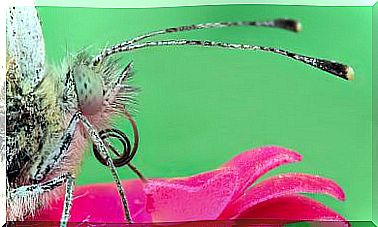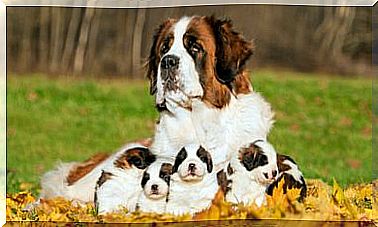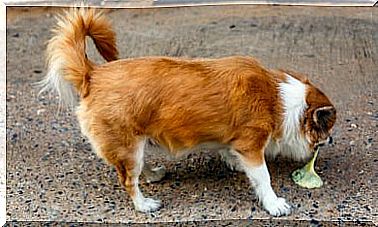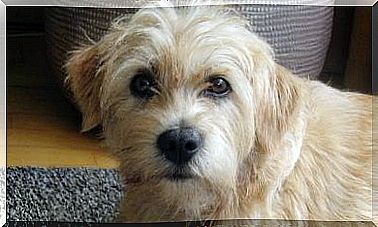Lovebirds: Characteristics, Breeds And Care
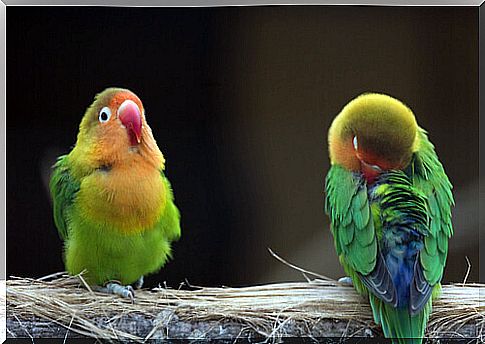
Lovebirds, also known as inseparable or love birds, are among the most popular types of parrots in the world. Although they are native to Africa, their population has spread globally and today many specimens are adopted as pets.
The main breeds of lovebirds
At present, nine breeds of lovebirds are recognized by experts as the ‘primitive or ancestral breeds’. But with the growth of captive breeding, it is estimated that there are various subspecies that have originated from the crossing of ancestral lovebirds.
Next, we will see the three most popular types of lovebirds:
Fischer’s inseparable ( Agapornis fischeri )
This lovebird native to East Africa receives its name in homage to the explorer Gustav Fisher, thus being its scientific name . It is a very agile breed of outstanding beauty, which emits high-pitched calls and very loud volumes.
One of its most distinctive characteristics is the so-called eye ring, that is, the region around its eyes is devoid of feathers and is white. Its plumage has different shades of green, yellow and orange.
On its back, wings and chest, we observe an intense green, while the upper part of its head is olive green. His face stands out for a very intense orange, which blends harmoniously with the yellow of his neck. On the tail, the presence of eventual bluish feathers is noted.
Namibian lovebird ( Agapornis roseicollis )
The Namibian lovebird is a medium-sized bird, about 15 cm long, native to southwestern Africa. In some countries it is also often called “inseparable peach face”, because of the appearance of its face.
Its head and face reveal a pinkish-orange color very similar to that of the aforementioned fruit. But in the plumage of its body a green color predominates. Females tend to have more discreet colored feathers and a larger head than males.
This breed of lovebird stands out for being very sociable and emitting a wide range of sounds, being very communicative with people. In addition, they have a life expectancy of around 20 or 25 years, being able to live up to 30 years under favorable conditions. For these reasons, they are very popular as pets.
Masked lovebird ( Agapornis personatus )
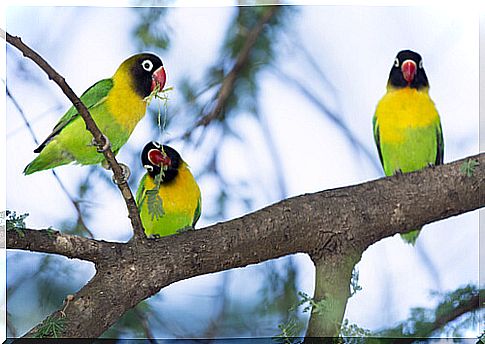
The masked inseparable or black-headed lovebirds are one of the most striking breeds of lovebirds. They are characterized by having black or dark brown feathers on their head, which combined with the eye ring form a kind of mask on their face.
Regarding the color of their plumage, these birds are divided into two lines: blue line and green line. In green line lovebirds, we observe the predominance of the green color, with a yellow neck and a red beak; in blue-lined lovebirds, the blue color on their body stands out, with a white breast.
Although they can emit very loud sounds, masked lovebirds are usually quiet. Due to their great physical resistance and balanced character, they are one of the most common lovebirds in the exotic bird market. Its life expectancy is estimated between 15 and 20 years in captivity.
Basic care for a lovebird
Responsible adoption
Unfortunately, many lovebirds continue to be victims of exotic animal trafficking. Therefore, it is essential to know where to buy a lovebird as a pet.
The ideal is to go to an exotic animal rescue center, where we will find lovebirds that are looking for a new home and a responsible caretaker. As they are very sociable birds that form stable pairs, it is recommended to adopt a pair of lovebirds, and not just one.
Preparing the cage of your lovebird
Before taking your partner to his new home, it will be essential to prepare a comfortable and safe environment in your home. The first step will be to choose the ideal cage for your lovebirds in a pet store.
It is recommended to acquire a large and resistant cage, where the lovebirds can move freely. A good cage for a pair of lovebirds should measure 1 m long x 0.50 m high x 0.50 m wide. Metal cages are more hygienic, as wood facilitates the proliferation of fungi and bacteria.
It will be essential to choose the feeder and the drinker for your lovebirds, ensuring that they are appropriate for their size. Stainless steel feeders are more hygienic, and it is recommended to purchase a ball-type drinker to prevent the water from accumulating impurities.
Finally, we must enrich the cage of our lovebirds to stimulate them physically and mentally. In addition to bird-appropriate toys, we recommend adding a natural perch to your space.
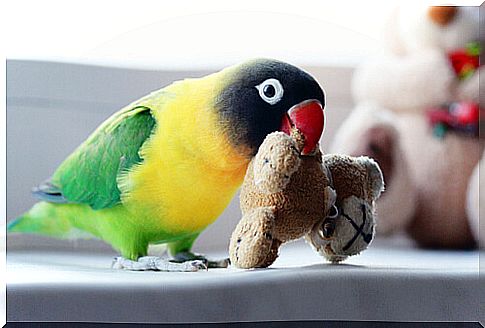
Food for your inseparable
Lovebirds are omnivorous birds that consume seeds, fruits, vegetables, and some small animals. In addition to choosing the right feed as the basis of your diet, we will also offer you fresh and natural food.
Hygiene
Lovebirds are very clean birds and require careful hygiene in their cage. It is recommended to wash the feeder, the drinker and the excrement tray daily; the cage will also need a complete sanitization every week.
Preventive medicine
Lovebirds can suffer from internal and external parasites with some ease. Therefore, periodic deworming will be essential to maintain good health.
It is highly advisable to have the guidance of a specialized veterinarian to offer adequate preventive medicine to your lovebirds.


